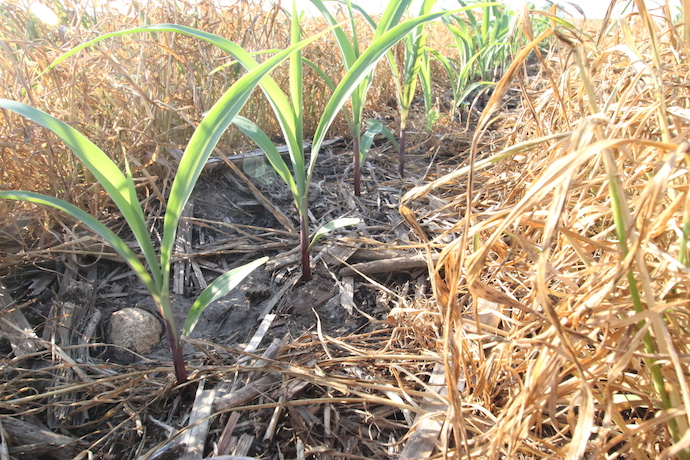Recent years have seen growing interest among strip-tillers in experimenting with and incorporating different mixes and seeding methods of cover crops to achieve desired results.
Adoption had been on a steady incline for the past 3 years, with some 61% of strip-tillers utilizing cover crops, according to our 2018 Strip-Till Operational Practices Benchmark study. An even higher percentage of no-tillers (83%) utilize cover crops, according to the most recent No-Till Farmer benchmark study.
But only a small percentage of all farmers have adopted cover cropping practices — with some estimates as low as 2-3%. The disparity reinforces the innovative nature of strip-tillers and no-tillers, but also positions these groups of farmers as educators.

Some farmers see the opportunity to leverage their knowledge and experience with cover crops as a learning tool for absentee landowners, who need to realize the long-term soil health value of renting to no-tillers and strip-tillers.
At the same time, cover cropping is getting more publicity than it ever has — but newcomers are wise to make sure they do their homework and network with those who have had success, as well as worked through challenges.
Walking the grounds at this year’s Farm Progress Show in Boone, Iowa, I noticed a number of manufacturers with signage attaching their products or systems to cover cropping performance. The practice continues to gain momentum, and a couple of farmers and companies I spoke with even went so far as to suggest that at some point, they expect cover cropping will be mandatory.
In one respect, this is a pretty progressive notion, given the seemingly small number of acres on which cover crops are currently being seeded. On the other hand, the suggestion is a validation that strip-tillers and no-tillers have been ahead of the curve for years in reaping the benefits of cover cropping.
So what do you think — will we see a day when cover cropping is a required practice? Weigh in with your take in our latest online poll.






